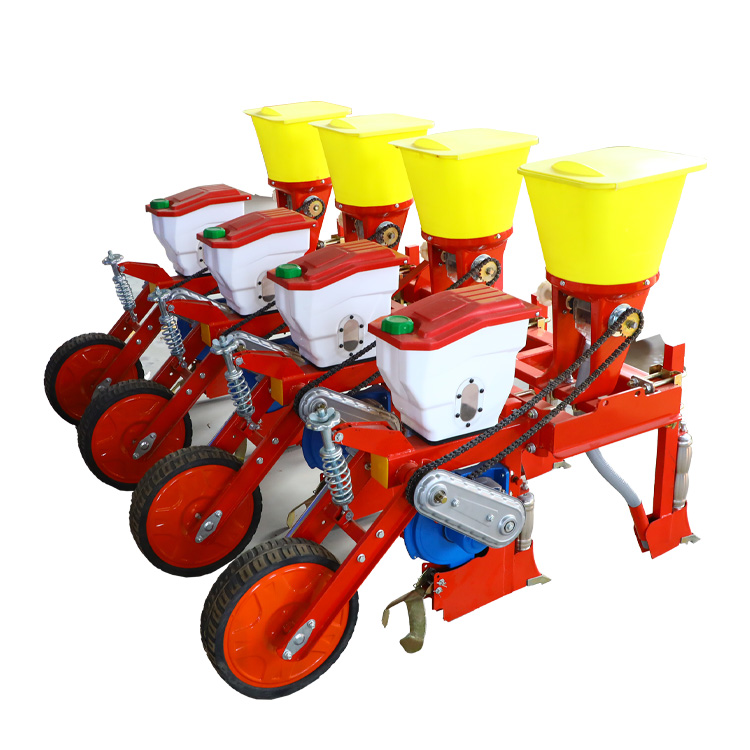
 English
English  Español
Español Português
Português русский
русский Français
Français 日本語
日本語 Deutsch
Deutsch tiếng Việt
tiếng Việt Italiano
Italiano Nederlands
Nederlands ภาษาไทย
ภาษาไทย Polski
Polski 한국어
한국어 Svenska
Svenska magyar
magyar Malay
Malay বাংলা ভাষার
বাংলা ভাষার Dansk
Dansk Suomi
Suomi हिन्दी
हिन्दी Pilipino
Pilipino Türkçe
Türkçe Gaeilge
Gaeilge العربية
العربية Indonesia
Indonesia Norsk
Norsk تمل
تمل český
český ελληνικά
ελληνικά український
український Javanese
Javanese فارسی
فارسی தமிழ்
தமிழ் తెలుగు
తెలుగు नेपाली
नेपाली Burmese
Burmese български
български ລາວ
ລາວ Latine
Latine Қазақша
Қазақша Euskal
Euskal Azərbaycan
Azərbaycan Slovenský jazyk
Slovenský jazyk Македонски
Македонски Lietuvos
Lietuvos Eesti Keel
Eesti Keel Română
Română Slovenski
Slovenski मराठी
मराठी Srpski језик
Srpski језик
What are the environmental impacts of using a corn seed planter?
2024-09-30

What are the environmental impacts of using corn seed planter seeders?
1. Soil Erosion: Continuous planting involving conventional farming practices leads to increased soil erosion. The constant tillage operations can contribute to the wearing away of soil particles leading to soil degradation and ultimately soil erosion.
2. Chemical leaching: Using a seed planter entails the use of various chemical applications such as fertilizers, insecticides, and other treatments. The usage of these chemicals can have profound effects on the soil leading to the leaching of harmful chemicals into the water bodies such as rivers and seas. Ultimately, this can lead to the destruction of marine life and wildlife habitats.
3. Air Pollution: The use of the corn seed planter also has negative impacts on the environment by increasing air pollution. The adoption of conventional farming practices has led to increased usage of fossil fuels, which releases carbon oxides into the atmosphere, leading to climate change.
How can the negative environmental impacts of using corn seed planter seeders be reduced?
1. Conservation tillage: This farming practice is designed to maintain the organic matter in the soil, thus preventing soil erosion.
2. Integrated Pest Management (IPM): This involves the use of pest control techniques that are less harmful to the environment as compared to traditional pesticides and herbicides.
Conclusion
The use of corn seed planter seeders in agricultural farming has both positive and negative environmental impacts on the environment. However, implementing sustainable agriculture practices such as conservation tillage, and integrated pest management can help reduce these negative impacts.
Hebei Shuoxin Machinery Manufacturing Co., Ltd. is a company that prides itself on producing state of the art agricultural machinery. Our products have been tested and certified, and we aim to promote sustainable agricultural practices. For more information, please visit our website at https://www.agrishuoxin.com or email us at mira@shuoxin-machinery.com
References
Lal, R. (1995). Tillage effects on soil degradation, soil resilience, soil quality and sustainability. Soil and Tillage Research, 33(1), 23-43.
Altieri, M. A., & Nicholls, C. I. (2004). Biodiversity and pest management in agroecosystems. Food, Agriculture & Environment, 2(2), 113-118.
Pimentel, D., Hepperly, P., Hanson, J., Douds, D., & Seidel, R. (2005). Environmental, energetic, and economic comparisons of organic and conventional farming systems. Bioscience, 55(7), 573-582.
Wu, J., & Chong, L. (2016). Carbon footprint analysis of soybean and corn production in Northeast China. Journal of Cleaner Production, 112, 1029-1037.
Jackson, L. E., Pascual, U., & Hodgkin, T. (2007). Utilizing and conserving agrobiodiversity in agricultural landscapes. Agriculture, Ecosystems & Environment, 121(3), 196-210.
Caswell-Chen, E. P. (2004). Fundamentals of soil ecology. Academic Press.
Naveed, M., Brown, L. K., Raffan, A. C., George, T. S., Bengough, A. G., Roose, T., ... & Koebernick, N. (2017). Rhizosphere-scale quantification of hydraulic and mechanical properties of soil using X-ray μCT and indentation techniques. Plant and Soil, 413(1-2), 139-155.
Jat, M. L., Singh, R. G., Yadav, A. K., Kumar, M., Yadav, R. K., Sharma, D. K., & Gupta, R. (2018). Laser land-leveling to enhance productivity, profitability and natural resource conservation in rice–wheat system of the north western Indo-Gangetic plains. Soil and Tillage Research, 175, 136-145.
Wallach, D., Makowski, D., Jones, J. W., Brun, F., Ruane, A. C., Adam, M., ... & Hoogenboom, G. (2015). The downside of high crop yield variability: impacts of shocks on agrobiodiversity use. Agricultural Systems, 137, 143-149.
Zhang, H., Wang, X., Norton, L. D., Su, Z., Li, H., Zhou, J., & Wang, Y. (2018). Simulating impacts of temperature and precipitation changes on phenology and grain yield of maize under different planting strategies. Agricultural Water Management, 196, 1-10.
Ramos-Fuentes, E., & Bocco, G. (2017). Environmental impacts of tree plantations and their social implications in Mexico. Annals of Forest Science, 74(3), 48.




